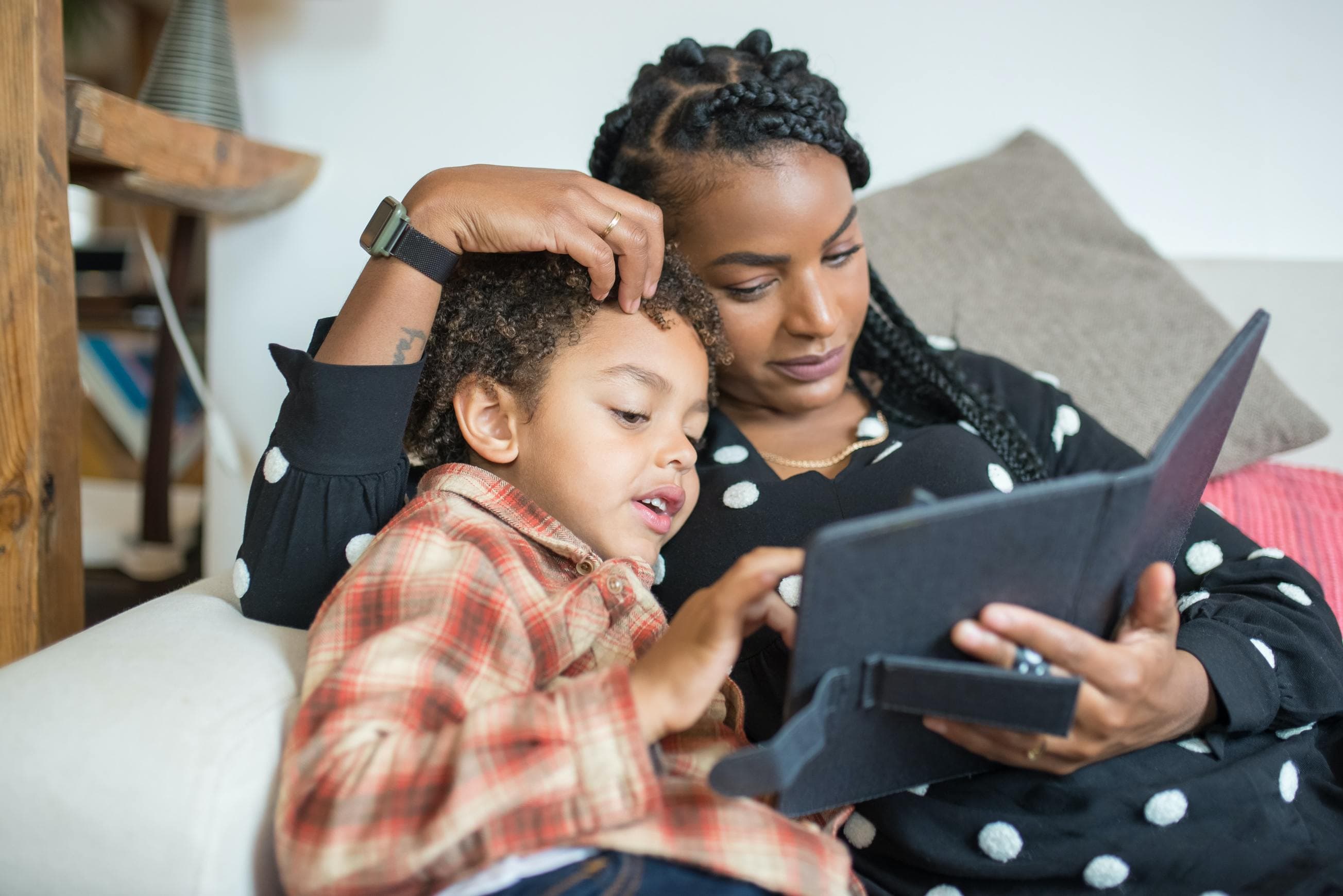Helping kids (and yourself) manage anxiety

By Brightline team, Apr 30, 2024
Have you ever heard the phrase, “You’re only as happy as your least happy child”? As a parent or caregiver, your emotions can be so closely tied to those of your kids that it can be hard to separate how they feel from how you feel. You experience the highest of highs together — and you’re subject to feeling low when they do.
If your child is struggling with anxious thoughts, it can make you feel worried for them and confused as to how to help. But when you are dealing with your own anxiety as well, it can make the situation feel that much more overwhelming.
How do you manage your own levels of worry while also supporting your child when they are in need? Here are five ways to help you self-regulate while still being there for your child.
Give yourself grace
Parenting is tough. And sometimes it’s hard to know what your child needs during emotional situations — whether you have anxiety or not. Prioritize self-compassion, especially when you’re trying to co-regulate your anxiety along with your child’s.Know your own triggers
If you aren’t already aware of what triggers your own anxiety, it’s time to get a clear understanding of when it comes on and why. The better you understand yourself, the more able you are to help others. Knowing what brings on your own anxious feelings can also give you a sense of control over the situation. And if your triggers happen to be the same as your child’s, preparing in advance for ways to handle them can help you both.Plan healthy responses
If you have ongoing anxiety, you need tools you can use to navigate it. When you are able to manage your own responses, you’ll be more ready to help your child with theirs. Some options to try are mindfulness techniques, breathing exercises, therapy or coaching, yoga or other physical exercise, singing, or getting grounded in nature. These are all things that can help both you and your child navigate anxious thoughts or distract from them. If they’re experiencing anxiety around an upcoming event, talking it through in advance can help them feel more prepared: What’s the best case scenario, the worst case scenario, and the thing that is most likely to happen. Having a plan in place no matter what, can reduce worry beforehand.Build a family framework and keep the communication door wide open
Acknowledging your own anxiety and the need to handle it in healthy ways is powerful. And recognizing that your child’s anxious feelings aren’t necessarily connected to yours — they might be experienced at different times, in different ways, and for different reasons — is also vital. Even with individual relationships to anxiety, a family approach to it can be helpful. Create terms that everyone in your home can use to let others know what they’re feeling — phrases like “I need a timeout” or “I don’t want help right now, I just need some quiet time” can help everyone avoid misunderstandings. Create time during the day or week to collectively (or separately) unwind, process thoughts, and prepare for upcoming situations.Normalize asking for help
Family and community are everything — and parents and caregivers tend to do their best when they have people they can lean on. Model asking for and receiving help for your child by creating a circle of helpers around you and your family. Talk openly about needing support to deal with your issues, and normalize getting help with the challenges your child is facing. When you reinforce your own skills, you can then partner with your child’s therapist or coach on your child’s care.
Something to keep in mind: If your child is aware of your anxiety, they may hesitate to come to you when they’re feeling anxious out of concern they will make your situation worse. Reassure them often that they can always come to you, no matter what either of you is feeling. It’s important for both of you to remember that you are never alone.
Your circle of helpers should include Brightline. Reach out to us to talk about setting up a support system and a care plan for your child today.